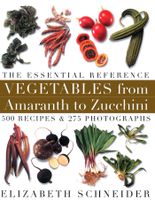Advertisement
Horseradish Tree, Drumstick
Moringa oleifera

Published 2001
Also
sajuna and murungaikkai (Indian) ,malunggay and variations (Philippine)
This native Indian plant is not a relative of horseradish or drums—both names that were given to it by the British. The tree is, however, a bit of a curiosity. It comes from a family, Moringaceae, with just one genus, Moringa, which makes it unusual by botanical definition. Its mustard-sharp leaves, flowers, immature seeds, and biting root (the explanation for its English name “horseradish”) are all edible. The long, slender, ribbed pods (the “drumsticks”) are the only part I have found in the Indian and Pakistani groceries in New York and New Jersey where I shop. For some reason, whenever I examine them, shoppers talk to me; that is also unusual, for these are markets where I am habitually ignored or viewed with overt mistrust. I have not discovered why these vegetables make friends.


